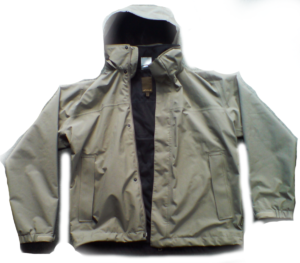
Uh-oh... A recent study found that even if a water- or stain-resistant children's product is labeled as "green" and "non-toxic", that label may be false. Silent Spring Institute researchers found that odds are good that the product contains persistent harmful PFAS (per- and polyfluoroalkyl substances). Precisely the opposite of what the "green" or "non-toxic" label promises.
PFAS are a group of toxic chemicals used in many consumer and industrial products. They are known to be endocrine (hormone) disruptors, and exposure to these chemicals has been linked to health problems such as certain types of cancer, reproductive harm (e.g., poorer semen quality), and birth defects, lowered sex and growth hormones in children, thyroid disease, immune effects, and liver and kidney damage.
Almost all of us have PFAS in our bodies (at varying levels). It's very hard to avoid them totally, but you should try to minimize exposure. They are found in a variety of consumer products such as firefighting foam, non-stick cookware, cosmetics, and materials that protect against grease, oil, and water (e.g., stain-resistant carpeting and fabrics, food packaging, and water-repellent clothing).
What can you do? If possible, avoid products that are water and stain proof or leak-proof, especially if children will be using the product. (For ex., can look for physical barriers instead of a chemical coating). Also, avoid products labeled with a trademark for water or stain resistance. PFAS don't have to be mentioned on labels, so it's buyer beware.
From Environmental Health News: “Green” children's products not always PFAS-free, warns new study
PFAS are finding their way into “green” and “nontoxic” products, especially waterproof products marketed toward children and adolescents, according to new research.
The researchers tested 93 items marketed to or often used by children and adolescents, including clothing, face masks, mattress protectors, rugs, sheets, and upholstery. They detected fluorine, a PFAS indicator, in 54 of the 93 products. The 54 products shown to contain fluorine were then tested for specific PFAS chemicals.
The paper aimed to illustrate PFAS trends among products marketed as water- or stain-resistant, as well as those with and without “green” labeling or green certifications—third-party assurances that convey to the consumer that the product satisfies certain criteria for chemical safety. At least one item in every product category contained fluorine, while water- and stain-resistant products were most frequently found to contain evidence of PFAS.
Waterproof or stain-resistant products labeled with “green” language, such as “nontoxic” or “eco-friendly,” as well as products with green certifications, were found to have similar concentrations of fluorine, a PFAS indicator, to waterproof or stain-resistant products without “green” labeling. Some waterproof products with the green certifications Greenguard Gold and Oeko-Tex Standard 100, two certifications designed to reduce chemical risks to human health, were shown to contain evidence of PFAS.
However, multiple products tested by the researchers, some of which were labeled with “green” language, contained PFOA. Schaider thinks the PFOA in these products is likely from international sources, such as China, where PFOA manufacturing is still widespread.
Some products tested also contained PFAS precursors—chemicals that break down or are converted into PFAS once they degrade in the environment or enter the human body. The amount of PFAS precursors found in the products was often higher than the amount of named PFAS chemicals detected.
From Science Daily: Children's products labeled water- or stain-resistant may contain PFAS
Seems like kids are always getting into something, so products marketed toward them often claim to repel liquids. Some items contain potentially harmful per- and polyfluoroalkyl substances (PFAS) to accomplish this feat, but companies aren't required to disclose these "forever chemicals" on labels. Now, researchers reporting in ACS' Environmental Science & Technology show that some children's products advertised as water- or stain-resistant contain PFAS, even items labeled "green" or "nontoxic."
Exposure to PFAS through inhalation and ingestion has been linked to a number of health concerns, including decreased effectiveness of vaccines in children, cancers and high cholesterol, according to the U.S. Centers for Disease Control and Prevention. But few studies have looked at potential PFAS exposures among kids and teens from the products they interact with. So, Laurel Schaider and colleagues wanted to see whether these compounds were present in apparel, bedding and furnishings that are marketed to children or expected to be used by them.
The team's data revealed that 54 of the 93 items surveyed contained fluorine, an indicator of PFAS. Of the fluorine-containing products, 18 had measurable levels of at least one PFAS. A total of 19 had precursor compounds that can be transformed into highly stable perfluoroalkyl acids when oxidized in the environment or the human body. PFAS and their precursors were only found in items specifically labeled with trademarks for water- or stain-resistance, or that used similar wording, such as "waterproof," "stainproof" or "leak-proof." Some of these products also had green certifications or claimed to be nontoxic.
Overall, products marketed toward young consumers as water- or stain-resistant could contain PFAS, which the researchers say represents a nonessential use of these substances. They suggest that these substances be removed to protect children's health.
